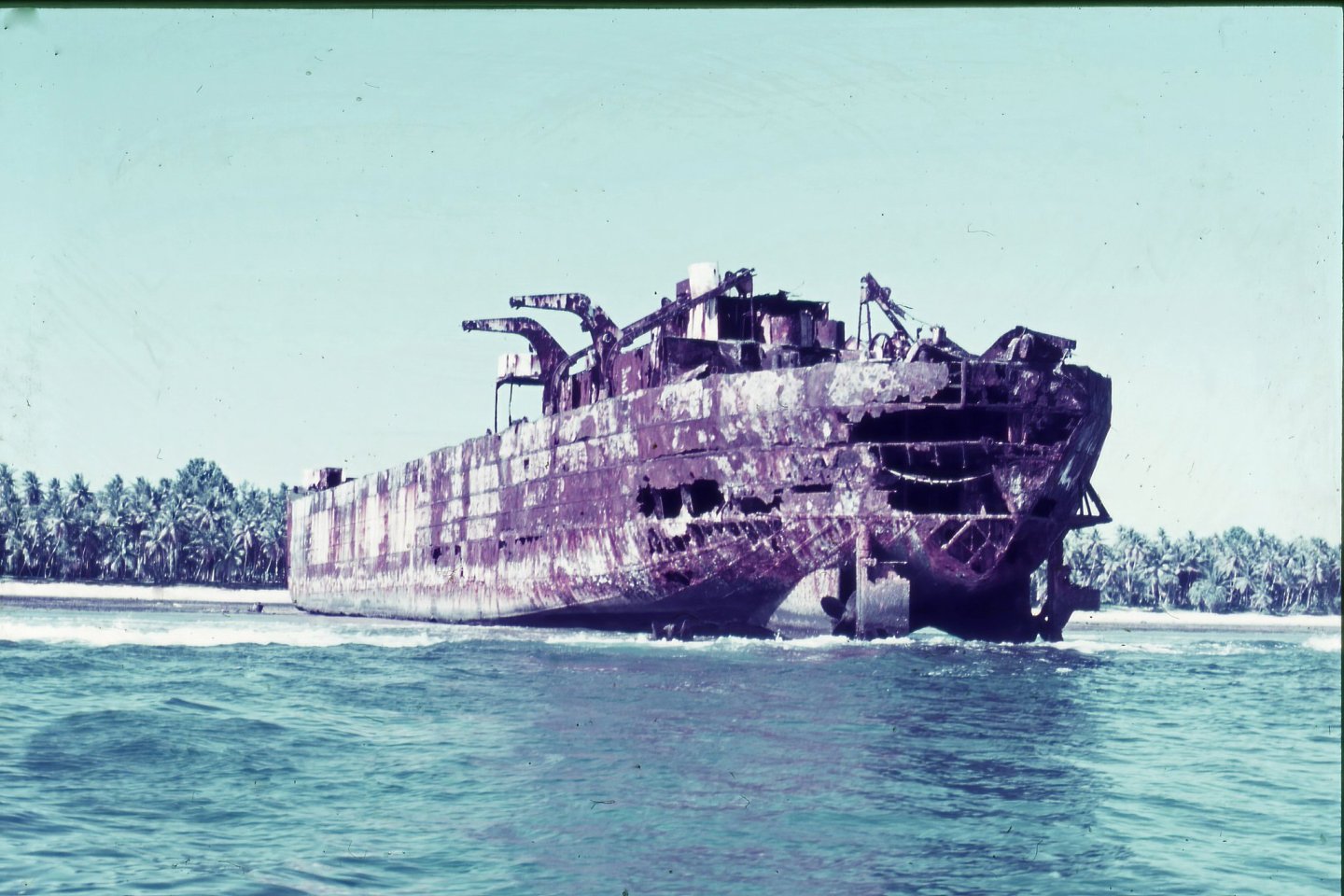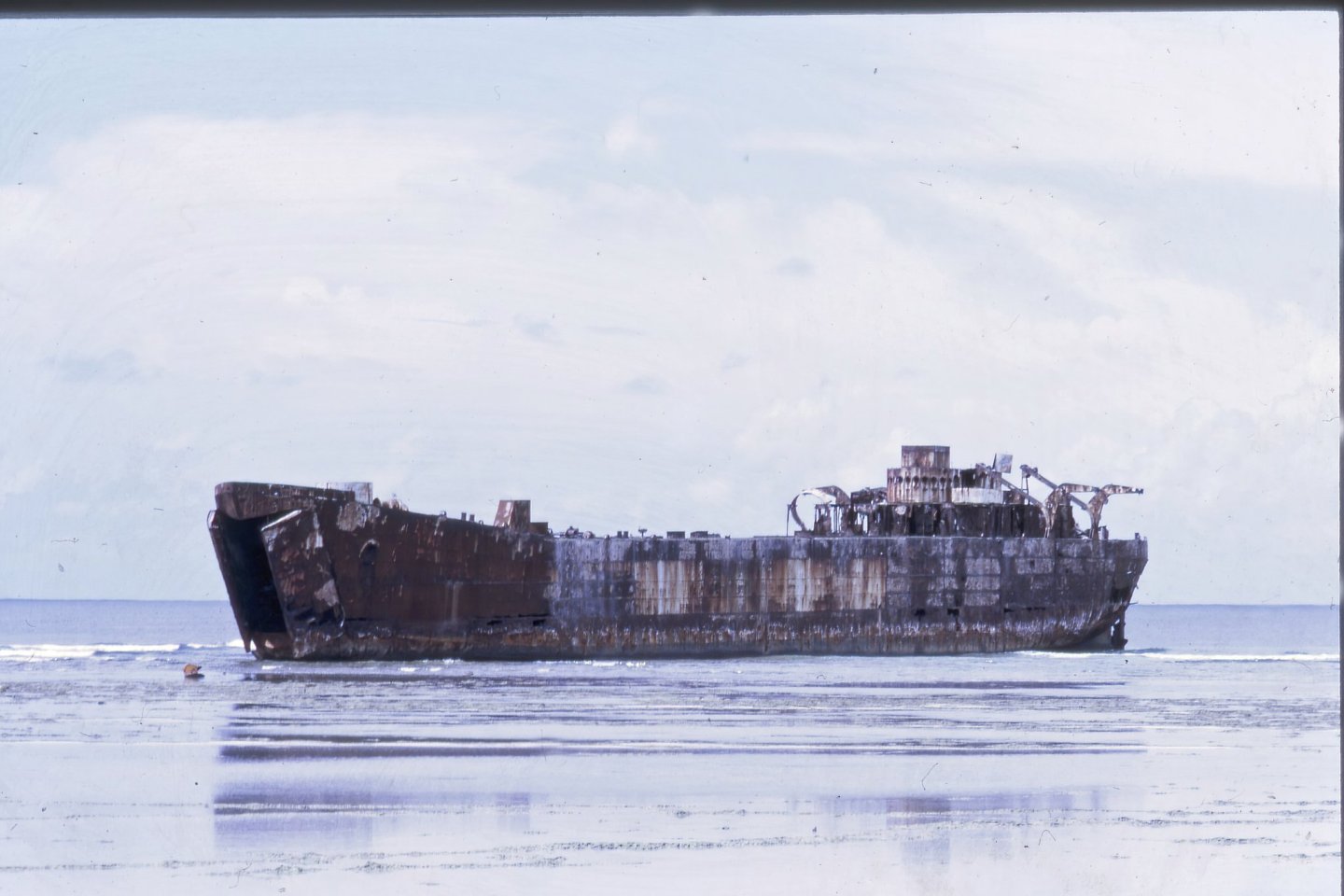-
Posts
9,469 -
Joined
-
Last visited
Content Type
Profiles
Forums
Gallery
Events
Everything posted by Jim Lad
-
Sorry I'm late to this thread. I thought this photo might be of interest. Part of the hull of the 1864 barque 'City of Adelaide' undergoing preservation at Port Adelaide in South Australia. She doesn't have treenails, rather plugs over bolts as the planks are bolted to the iron frames. Some of the plugs have dropped out, but many remain in place, so I thought it interesting, nevertheless. John
-
Sorry to hear about the Covid, mate! Hope it's a light dose. John
- 22 replies
-
- gaff sloop
- restoration
-
(and 1 more)
Tagged with:
-
You're making very nice progress on that, Jimbo. It's looking really good. By the way, as you're working on an L.S.T. (I always thought that was an acronym for 'large slow target' 🙂), I thought these images might be of passing interest to you. When the American military occupied Nanumea in early September 1943 they brought their forces in a n L.S.T., which they unfortunately beached just a little too hard on the unforgiving coral reef and, as far as I know, it's there to this day. These images were taken in 1971. John
-
Hello Glenn, and a warm welcome to the forum from 'Down Under'. John
-
Should be able to attach extra ballast for sailing. maybe even have a sailing rig and a display rig? John
- 22 replies
-
- gaff sloop
- restoration
-
(and 1 more)
Tagged with:
-
Of course if you rig her fully, you could then take her sailing! John
- 22 replies
-
- gaff sloop
- restoration
-
(and 1 more)
Tagged with:
-
Delightful work, Phil. Such fun to build one of your old ships (I've built two of mine)! John
- 433 replies
-
- minesweeper
- Cape
-
(and 1 more)
Tagged with:
-
Hello Nicolás, and a warm welcome to the forum from the other side of the Pacific! John
-
I agree with Druxey wholeheartedly. She's well worth bringing back to life. John
- 22 replies
-
- gaff sloop
- restoration
-
(and 1 more)
Tagged with:
-
It's amazing just how much detail there is on even a small ship! John
- 433 replies
-
- minesweeper
- Cape
-
(and 1 more)
Tagged with:
About us
Modelshipworld - Advancing Ship Modeling through Research
SSL Secured
Your security is important for us so this Website is SSL-Secured
NRG Mailing Address
Nautical Research Guild
237 South Lincoln Street
Westmont IL, 60559-1917
Model Ship World ® and the MSW logo are Registered Trademarks, and belong to the Nautical Research Guild (United States Patent and Trademark Office: No. 6,929,264 & No. 6,929,274, registered Dec. 20, 2022)
Helpful Links
About the NRG
If you enjoy building ship models that are historically accurate as well as beautiful, then The Nautical Research Guild (NRG) is just right for you.
The Guild is a non-profit educational organization whose mission is to “Advance Ship Modeling Through Research”. We provide support to our members in their efforts to raise the quality of their model ships.
The Nautical Research Guild has published our world-renowned quarterly magazine, The Nautical Research Journal, since 1955. The pages of the Journal are full of articles by accomplished ship modelers who show you how they create those exquisite details on their models, and by maritime historians who show you the correct details to build. The Journal is available in both print and digital editions. Go to the NRG web site (www.thenrg.org) to download a complimentary digital copy of the Journal. The NRG also publishes plan sets, books and compilations of back issues of the Journal and the former Ships in Scale and Model Ship Builder magazines.







